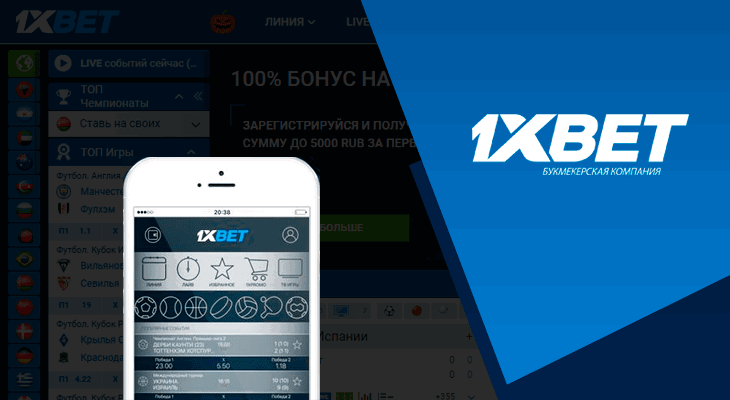Ultimate Guide to 1xBet Malaysia Betting 38

Ultimate Guide to 1xBet Malaysia Betting
If you’re looking to start your journey in the world of online betting, 1xBet Malaysia Betting 1xbet Malaysia Betting offers a fantastic platform that combines variety, security, and user-friendly features. This comprehensive guide will delve into everything you need to know about betting with 1xBet in Malaysia, from the basics to advanced strategies.
Understanding Online Betting
Online betting has gained immense popularity in Malaysia, offering enthusiasts a platform to wager on sports, casino games, and various other events right from their homes. The accessibility of mobile devices has further facilitated this trend, allowing users to place bets anytime and anywhere.
Why Choose 1xBet?
1xBet is one of the leading online betting platforms in the world and has made its mark in Malaysia. Here are a few reasons why you should consider 1xBet Malaysia Betting:
- Variety of Betting Options: 1xBet offers a wide range of sports and events to bet on, including football, basketball, cricket, esports, and much more.
- Competitive Odds: With 1xBet, you’ll find some of the most competitive odds in the betting industry, ensuring that you get the best value for your wagers.
- User-Friendly Interface: The platform is designed with user experience in mind, making it easy for beginners and seasoned bettors alike to navigate.
- Secure Transactions: Safety is paramount at 1xBet, which uses state-of-the-art encryption technology to secure transactions and personal data.
- Attractive Bonuses: New users can benefit from generous welcome bonuses, while existing members can take advantage of various promotions to enhance their betting experience.
Getting Started with 1xBet Malaysia Betting
Beginning your betting journey with 1xBet is straightforward. Follow these simple steps to get started:
- Visit the Website: Go to the 1xBet website to explore the various betting options available.
- Create an Account: Click on the registration button and follow the prompts to create your account. Make sure to provide accurate information for a smooth verification process.
- Deposit Funds: Once your account is set up, you can deposit money using various payment options available for Malaysian users.
- Choose Your Bets: Navigate through the sports and events available for betting, analyze them using the available statistics, and place your bets.
- Withdraw Your Winnings: After your bets have been settled, you can withdraw your winnings using the withdrawal methods provided by 1xBet.
Popular Sports to Bet On
In Malaysia, certain sports are particularly popular among bettors. Here’s a closer look:

- Football: As the most popular sport in Malaysia, football betting attracts millions. Bettors can wager on local leagues as well as international tournaments.
- Cricut: Cricket also enjoys a huge following, especially during major tournaments like the IPL and World Cup, where various betting options are available.
- Basketball: With the NBA’s global popularity, basketball betting has become increasingly prevalent among Malaysian bettors.
- Esports: The rise of esports has opened a new frontier for betting enthusiasts, giving them a chance to wager on competitive gaming events.
Understanding Betting Types
Before placing a bet, it’s essential to understand the different types of bets you can place on 1xBet:
- Single Bet: This is the simplest form of betting, where you wager on a single outcome.
- Multiple Bet: This involves combining multiple selections into one bet, offering higher potential returns.
- Live Betting: Bet on ongoing events as the action unfolds, allowing for a more interactive experience.
- Accumulator Bets: Place a bet on several selections, and if all win, the odds multiply for potentially higher payouts.
Strategies for Successful Betting
While betting involves luck, applying strategies can improve your chances of success:
- Research: Stay informed about the teams, players, and events you’re betting on. Use statistical analysis and expert insights to guide your decisions.
- Manage Your Bankroll: Set a budget for your betting activities and stick to it. Avoid chasing losses as it may lead to poor decisions.
- Understand the Odds: Familiarize yourself with how betting odds work and find value in the bets you place.
- Never Bet Under Emotion: Stay calm and objective. Emotional betting often leads to mistakes.
Mobile Betting with 1xBet
1xBet also offers a robust mobile betting platform, allowing you to place bets directly from your smartphone or tablet. With a user-friendly app, you can access all the features available on the desktop version, making it convenient for bettors on the go.
Customer Support
If you encounter any issues while using the platform, 1xBet provides excellent customer support available through live chat, email, and phone. Their team is ready to assist with any queries, ensuring a seamless betting experience.
Conclusion
1xBet Malaysia Betting is an exciting gateway into the world of online betting. With numerous options, secure transactions, and attractive bonuses, it’s an excellent choice for both new and experienced bettors. Whether you’re placing a bet on your favorite sport or trying your luck in the casino, 1xBet provides an engaging platform to enhance your betting experience. By following the strategies outlined in this guide and keeping informed about the events you’re betting on, you can maximize your enjoyment and potential winnings. Happy betting!










